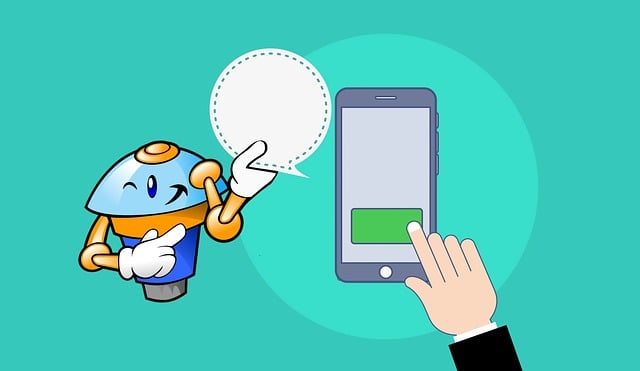Ecommerce AI chatbots powered by NLP and machine learning transform customer interactions, offering 24/7 personalized support and product guidance, improving efficiency, and fostering brand loyalty. Free platforms like Chatbot.com and MobileMonkey provide user-friendly interfaces that integrate with popular ecommerce platforms like Shopify and WooCommerce. Selecting a chatbot should prioritize NLP for accurate interaction, integration for seamless data exchange, real-time inventory updates, and AI-driven product recommendations. For optimal performance, define clear objectives, ensure seamless integration, refine based on feedback, and analyze key metrics while staying updated on advancements in ecommerce AI technology.
In today’s digital age, an effective ecommerce ai chatbot can transform customer interactions and drive sales. This comprehensive guide explores the world of artificial intelligence-powered chatbots tailored for the ecommerce sector. We delve into the benefits and diverse use cases, highlighting how these tools can enhance user experiences, automate tasks, and boost conversions. Discover the top free platforms offering cutting-edge features, and learn implementation tips to harness the full potential of an ecommerce ai chatbot.
- Understanding Ecommerce AI Chatbots: Benefits and Use Cases
- Top Free AI Chatbot Platforms for Ecommerce Sites
- Key Features to Look Out For in a Free Ecommerce AI Chatbot
- Implementation Tips for Optimal Performance
Understanding Ecommerce AI Chatbots: Benefits and Use Cases

Ecommerce AI chatbots are transforming the way businesses interact with their customers, offering a range of benefits that enhance both customer experience and operational efficiency. These intelligent virtual assistants leverage natural language processing (NLP) and machine learning algorithms to engage in meaningful conversations, answer queries, and provide personalized product recommendations. By simulating human-like interactions, they create an engaging shopping environment, building trust and fostering brand loyalty.
Use cases for ecommerce AI chatbots are diverse. They can handle customer support inquiries, providing instant solutions to common issues or directing complex problems to human agents. Chatbots can also assist in navigation, suggesting products based on browsing history, preferences, or current trends. Moreover, they facilitate post-purchase tasks such as order tracking, returns, and shipping updates, streamlining the entire shopping journey. With their 24/7 availability and ability to handle multiple conversations simultaneously, AI chatbots significantly reduce response times and workload for customer service teams.
Top Free AI Chatbot Platforms for Ecommerce Sites

Integrating an AI chatbot into your ecommerce site can significantly enhance customer experience, from providing instant support to offering personalized product recommendations. Among the top free AI chatbot platforms for ecommerce sites are Chatbot.com and MobileMonkey. These tools offer intuitive interfaces that allow business owners to easily create and deploy chatbots without requiring any coding knowledge.
With features like natural language processing (NLP) and machine learning, these free options can understand customer queries and provide relevant responses. Moreover, they often include integrations with popular ecommerce platforms like Shopify and WooCommerce, making it hassle-free to add a chatbot to your online store. Whether you’re looking to boost sales through personalized interactions or simply improve customer satisfaction, these top free AI chatbot platforms are a great starting point for ecommerce businesses.
Key Features to Look Out For in a Free ecommerce ai chatbot

When considering an ecommerce AI chatbot, several key features should be at the top of your list to ensure it meets your business needs effectively. Firstly, natural language processing (NLP) is essential for any chatbot to understand and respond accurately to customer queries. Look for chatbots that employ advanced NLP algorithms to handle complex questions and sentiments, enhancing the overall user experience.
Additionally, integration capabilities are crucial. A top-tier ecommerce AI chatbot should seamlessly integrate with your existing platform, allowing for smooth data exchange between the chatbot and your store. This includes connecting with popular shopping carts, customer relationship management (CRM) systems, and analytics tools. Real-time inventory updates and product recommendations powered by AI can significantly improve customer satisfaction and sales conversions.
Implementation Tips for Optimal Performance

Implementing an AI chatbot, particularly one optimized for ecommerce, requires a strategic approach to ensure peak performance. Firstly, define clear objectives and use cases; understand what tasks your chatbot will handle, from customer support to product recommendations. This step is crucial in tailoring the chatbot’s responses and capabilities.
Next, integrate the chatbot seamlessly into your website or platform. Ensure easy accessibility and a user-friendly interface. Regularly update and refine the chatbot based on user interactions and feedback. Analyze performance metrics such as response accuracy, user satisfaction ratings, and conversion rates to make data-driven improvements. Additionally, stay updated with the latest advancements in ecommerce AI chatbots to leverage new features and functionalities.
An ecommerce AI chatbot is no longer a luxury but a necessity, offering significant benefits such as enhanced customer support, improved sales conversions, and streamlined operations. By leveraging free platforms and focusing on key features like natural language processing, personalization, and integration capabilities, businesses can implement these chatbots effectively without breaking the bank. Remember that optimal performance comes from thoughtful implementation strategies tailored to your ecommerce site’s unique needs. With the right approach, an AI chatbot can become a powerful tool to elevate your online store’s performance and user experience.
